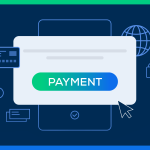The educational paradigm continues to shift dramatically as tech enables increasingly customized learning experiences. Personalized learning—the tailoring of pedagogy, curriculum, and learning environments to meet the needs and aspirations of individual learners—has moved from theoretical ideal to practical reality through digital tools. This transformation offers unprecedented opportunities to address diverse learning profiles while presenting new complexities for education systems. As schools navigate this evolving landscape, the focus increasingly centers on harnessing technology’s capabilities to create truly student-centered learning environments.
Foundations of Technology-Enabled Personalization
The concept of personalized learning predates modern technology, with educators long recognizing the benefits of adjusting instruction to individual needs. However, digital tools have dramatically expanded the feasibility of implementing personalization at scale. Today’s personalization platforms leverage several key capabilities:
Adaptive Learning Algorithms
Advanced algorithms analyze student performance data to identify knowledge gaps, learning preferences, and optimal pacing. These systems continuously adjust difficulty levels and content presentation based on real-time student interactions, creating dynamic learning pathways tailored to individual progress.
Data Analytics for Instructional Decision Making
Comprehensive learning analytics provide teachers with actionable insights about student performance patterns. These data dashboards help educators identify which students need additional support, which concepts require reteaching, and which instructional approaches yield the strongest outcomes for different learner profiles.
Implementation Models for Personalized Learning
Educational institutions implement technology-enabled personalization through various models, each representing different balances of teacher-directed and algorithm-directed learning experiences:
Rotation and Flex Models
Blended learning approaches often incorporate station rotation or flex models where students move between different learning modalities, including teacher-led instruction, collaborative activities, and personalized digital content. These models maintain significant teacher oversight while leveraging technology to provide differentiated content delivery.
Competency-Based Progression
Digital platforms increasingly support competency-based approaches where students advance based on demonstrated mastery rather than seat time. Technology facilitates this model through continuous assessment, progress tracking, and the ability to provide alternative learning pathways for students working at different paces.
Individual Learning Plans
Comprehensive personalization systems enable the development and implementation of individual learning plans that account for each student’s goals, strengths, challenges, and interests. Digital portfolios track progress across these personalized objectives, creating longitudinal records of growth.
The Evolving Teacher Role in Personalized Environments
Rather than diminishing the importance of educators, technology-enabled personalization transforms and often elevates the teacher’s role in the learning process. In effectively implemented personalized systems, teachers function as:
Learning Architects and Curators
Educators design the overall learning architecture within which personalization occurs, establishing boundaries, identifying essential content, and curating high-quality digital resources that align with curriculum standards.
Data-Informed Coaches
Teachers interpret complex learning analytics to identify patterns and needs that automated systems might miss. This human interpretation informs targeted interventions, adjustments to learning activities, and personalized feedback that extends beyond algorithm-generated responses.
Relationship Builders
As technology assumes more content delivery responsibilities, educators can dedicate greater attention to building the supportive relationships that research consistently identifies as crucial for student success. These connections provide the emotional scaffolding that helps students persist through learning challenges.
Addressing Implementation Challenges
Despite its potential benefits, technology-enabled personalization presents significant implementation challenges that schools must navigate:
Infrastructure and Access Requirements
Effective personalization requires robust technological infrastructure including reliable connectivity, sufficient devices, and interoperable systems. Schools implementing personalized learning must address both in-school and at-home access to ensure equitable opportunities for all students.
Teacher Preparation and Support
Few educators have received comprehensive preparation for teaching in technology-rich personalized environments. Successful implementation requires substantial professional development focusing on both technical skills and the pedagogical shifts associated with personalized approaches.
Data Privacy and Security Concerns
The extensive data collection essential for personalization raises important questions about student privacy, data ownership, and appropriate use limitations. Schools must develop comprehensive data governance frameworks that balance analytical capabilities with robust privacy protections.
Research on Effectiveness and Outcomes
Research on technology-enabled personalization shows promising but mixed results, with effectiveness highly dependent on implementation quality:
Academic Achievement Impacts
Studies indicate that well-implemented personalized learning approaches can yield modest gains in academic achievement, particularly in mathematics. However, results vary significantly across different models and student populations, suggesting that implementation specifics matter tremendously.
Non-Academic Outcomes
Beyond test scores, research suggests personalized approaches may positively impact student engagement, self-regulation, and learner agency when they incorporate meaningful choice and relevance. These non-academic outcomes represent increasingly important considerations in comprehensive effectiveness evaluations.
Implementation Factors
Research consistently identifies several factors associated with more successful personalization initiatives, including strong teacher preparation, adequate technical support, leadership commitment, and approaches that balance technology use with meaningful human interaction.
Equity Considerations in Personalized Learning
While personalization offers potential benefits for diverse learners, thoughtful implementation is essential to ensure these approaches advance rather than undermine educational equity:
Avoiding Algorithmic Bias
The algorithms underlying personalized systems may unintentionally perpetuate biases present in their development data. Schools must critically evaluate these systems and monitor outcomes across demographic groups to identify and address potential disparities.
Preventing Digital Determinism
Over-reliance on algorithm-directed learning paths can inadvertently limit opportunities for students initially performing below grade level. Effective personalization balances adaptation with high expectations, ensuring all students have pathways to advanced content.
Supporting Diverse Learners
When thoughtfully implemented, personalization can particularly benefit students with disabilities, English learners, and others whose needs differ from traditional classroom norms. This requires systems designed with universal design principles and cultural responsiveness as foundational considerations.
Future Directions in Personalized Learning
The field continues to evolve rapidly, with several emerging trends likely to shape future personalized learning environments:
Artificial Intelligence Advancements
Machine learning capabilities are rapidly advancing, enabling more sophisticated pattern recognition, natural language processing, and predictive analytics. These capabilities promise increasingly nuanced personalization that better accounts for the complexities of human learning.
Interoperability and Integration
Future systems will likely offer improved integration across platforms, creating more seamless personalized experiences that span different applications, content sources, and learning contexts.
Student-Directed Learning Expansion
Emerging approaches increasingly emphasize student agency in the personalization process, enabling learners to participate actively in setting goals, selecting resources, and determining learning pathways rather than simply following algorithm-directed routes.
Conclusion
Technology-enabled personalization offers significant potential to transform educational experiences by better addressing individual learning needs. However, realizing this potential requires thoughtful implementation that maintains focus on pedagogy rather than technology, balances personalization with community-building, and ensures equitable opportunities for all students.
The most successful personalized learning initiatives recognize that technology represents a powerful tool rather than a complete solution. By combining the analytical capabilities of digital systems with the irreplaceable human elements of effective teaching—including relationship-building, motivation, and complex feedback—schools can create learning environments that truly address individual needs while preparing students for collective participation in an increasingly complex world.
As personalization approaches continue to mature, maintaining this balanced perspective will be essential for developing systems that leverage technology’s capabilities while preserving education’s fundamentally human character.









